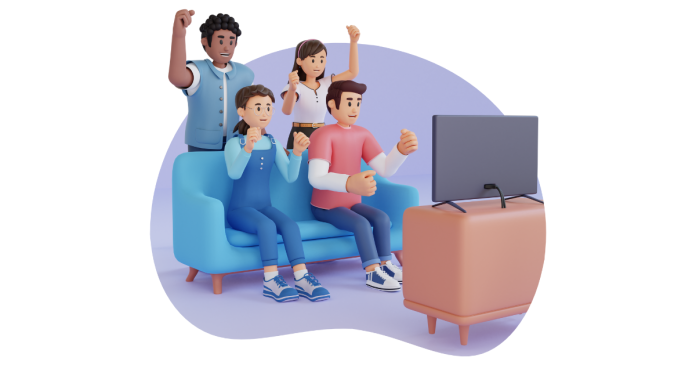Summary of Advantages and Disadvantages
| Advantages | Disadvantages |
|---|---|
| Provides information, news, and education | Encourages sedentary lifestyles and health issues |
| A versatile source of entertainment | Consumes excessive time |
| Promotes cultural and social awareness | Can influence behavior negatively |
| Enables live coverage of events | Reduces social interactions |
| Facilitates advertising and marketing | Advertising may promote materialism |
| Accessible to people of all literacy levels | Risk of misinformation and biased content |
Television (TV) has become one of the most influential mediums for communication, entertainment, and information dissemination. Like any technology, it has both benefits and drawbacks, depending on how it is used.
Advantages of Television
1. Source of Information
- News and Updates: Television provides real-time updates on current events, weather forecasts, and important global happenings.
- Educational Programs: Many channels focus on education, including documentaries, history, science, and cultural shows.
2. Entertainment
- TV offers a wide range of entertainment, including movies, dramas, reality shows, sports, and music channels.
- It brings families and friends together to share experiences, such as watching live sports or popular series.
3. Cultural Awareness
- Television introduces viewers to different cultures, traditions, and lifestyles worldwide through travel shows, documentaries, and international programs.
4. Social and Political Awareness
- TV helps people stay informed about social issues, political developments, and global crises, encouraging awareness and discussion.
5. Advertising and Business Opportunities
- Television is a powerful medium for advertising, helping businesses reach a large audience effectively.
- It creates opportunities for marketing, branding, and consumer engagement.
6. Accessibility
- Television is accessible to people of all ages and literacy levels, making it a universal source of information and entertainment.
7. Live Coverage
- TV enables live broadcasting of events, such as sports matches, political debates, and award ceremonies, connecting viewers with real-time experiences.
8. Inspiration and Motivation
- Shows featuring success stories, talent competitions, and motivational content inspire viewers to pursue their goals and dreams.
Disadvantages of Television
1. Passive Entertainment
- Watching TV is a largely passive activity, reducing physical activity and potentially contributing to a sedentary lifestyle.
2. Time Consumption
- Prolonged television watching can lead to wasted time, affecting productivity, studies, or work-life balance.
3. Health Issues
- Excessive TV watching can cause eye strain, headaches, and sleep problems.
- It contributes to obesity when combined with unhealthy snacking and lack of exercise.
4. Influence on Behavior
- Violent or inappropriate content can influence children and young viewers, leading to aggression or unhealthy habits.
- Unrealistic portrayals in shows can lead to skewed perceptions of reality.
5. Negative Social Impact
- Spending too much time watching TV can reduce face-to-face interactions with family and friends, leading to social isolation.
6. Dependence and Addiction
- Binge-watching and overreliance on TV for entertainment can create dependence and reduce engagement in other productive activities.
7. Misinformation
- Some channels may broadcast biased or inaccurate information, potentially misleading viewers.
8. Advertising Influence
- Constant exposure to advertisements can encourage materialism and unhealthy consumer behavior, especially in children.
9. Cost
- Access to premium channels, cable, or satellite subscriptions can be expensive.
Summary of Advantages and Disadvantages
Conclusion
Television is a powerful medium that offers numerous benefits when used responsibly. However, excessive or improper use can lead to negative consequences. Moderation and mindful consumption are key to making the most of television’s advantages while minimizing its disadvantages.



